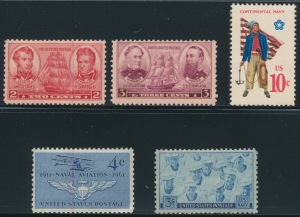If philately were a branch of sociology, political science or academic history it would be studied far differently from the way that it is studied by stamp collectors. Much less attention would be paid to printing and perfs and gum and far more to the actual stamp designs themselves. Scholars would study the new issue planning and approval process, how designs are chosen, who gets to propose stamps and who gets to design them. Studying the process would determine how open the society is and how much of a propagandistic purpose stamps play in social organization. An analysis of this would show countries like North Korea today or the Peoples Republic of China in the 1960s or Russia in the 1930s as profoundly closed societies offering highly propagandistic stamps. The smiling workers happily enjoying their jobs that are portrayed on these stamps are so ubiquitous as to suggest that the realtiy was far different. Third Reich German stamps were profoundly militaristic and nationalistic, a reflection of Nazi philosophy. Americans live in what is arguably the most free society that has ever existed and yet our postal issuing policy is very closed. Proposals for new stamps are not welcomed from the public and the process for suggestion, design and approval is not transparent. This is probably because of our Post office’s desire to be equapolitical and not to appear to have a particular agenda. All stamps have propaganda value and American stamps are no different. But in a stridently pluralistic society like ours, the new issue policy must be fair and balanced (its time to rehabilitate those words) and satisfy a very diverse populous. One of the things that most Americans can agree on is our pride in our military and it is for this reason that the Armed Forces have been so often honored .



